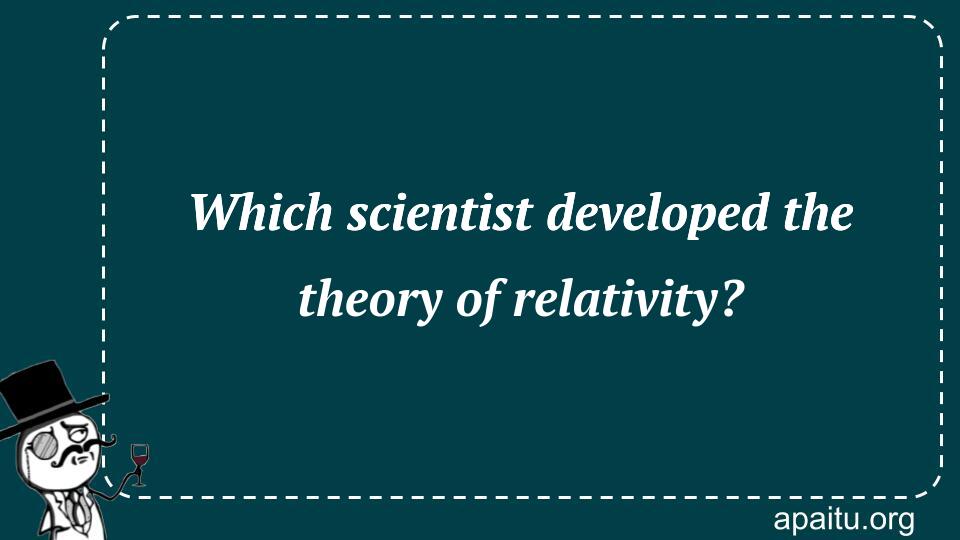Question
Here is the question : WHICH SCIENTIST DEVELOPED THE THEORY OF RELATIVITY?
Option
Here is the option for the question :
- Albert Einstein
- Isaac Newton
- Stephen Hawking
- Charles Darwin
The Answer:
And, the answer for the the question is :
Explanation:
In the early 20th century, Albert Einstein formulated the theory of relativity. It provides a unifying framework for describing and understanding a wide variety of physical phenomena, from the effects of gravity to the properties of light. Nearly everything of contemporary physics may be traced back to Einstein, but especially astronomy and cosmology.

Albert Einstein is one of the most famous scientists in history, known for his groundbreaking work in physics, including the development of the theory of relativity. Einstein’s theory of relativity fundamentally transformed our understanding of space, time, and the nature of the universe, and it continues to be one of the most important and influential scientific theories in the world today.
Einstein’s theory of relativity was first proposed in 1905 in a paper titled “On the Electrodynamics of Moving Bodies.” The theory is based on two main principles: the principle of relativity and the constancy of the speed of light. The principle of relativity states that the laws of physics are the same for all observers, regardless of their relative motion. The constancy of the speed of light means that the speed of light is the same for all observers, regardless of their motion relative to the light source.
Einstein’s theory of relativity has two main components: special relativity and general relativity. Special relativity deals with the behavior of objects moving at high speeds, while general relativity deals with the effects of gravity on the shape of space and time.
Special relativity has several important implications, including time dilation, length contraction, and the equivalence of mass and energy. Time dilation means that time appears to pass more slowly for objects in motion relative to an observer, while length contraction means that objects appear shorter when viewed from a moving frame of reference. The equivalence of mass and energy is expressed in Einstein’s famous equation E=mc², which states that energy and mass are two forms of the same thing and are interchangeable.
General relativity explains the behavior of gravity in terms of the curvature of space and time. According to general relativity, massive objects such as planets and stars warp the fabric of space and time, causing other objects to move in curved paths around them.
Einstein’s theory of relativity has had a profound impact on our understanding of the universe and has led to many important technological developments, including GPS navigation and the development of nuclear energy. It has also influenced many other areas of science, including cosmology and quantum mechanics.
Albert Einstein’s theory of relativity is one of the most important and influential scientific theories in history. It fundamentally transformed our understanding of space, time, and the nature of the universe, and it continues to be a driving force in scientific research and discovery today. Einstein’s legacy as a scientist and thinker remains an inspiration to people around the world.